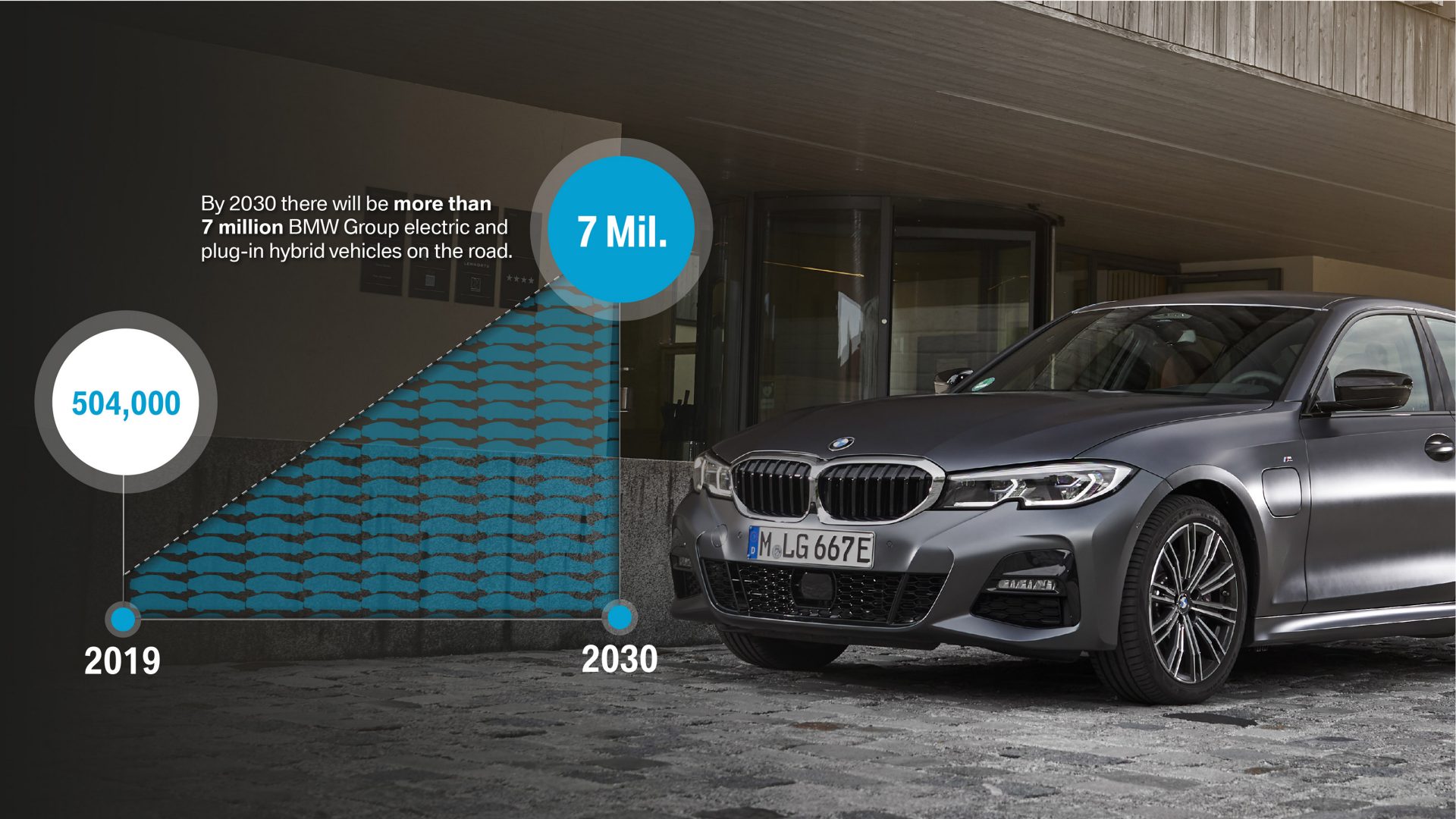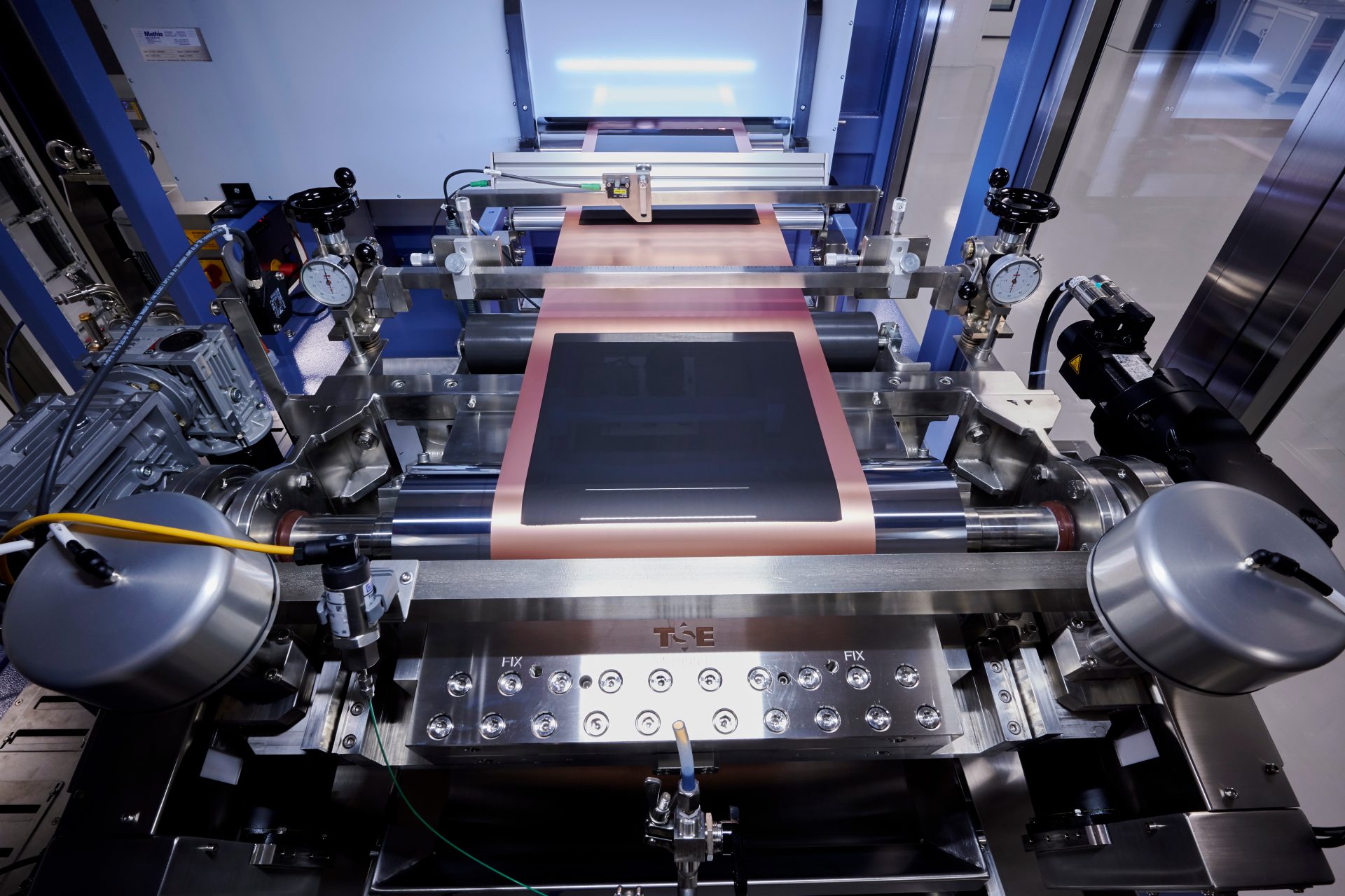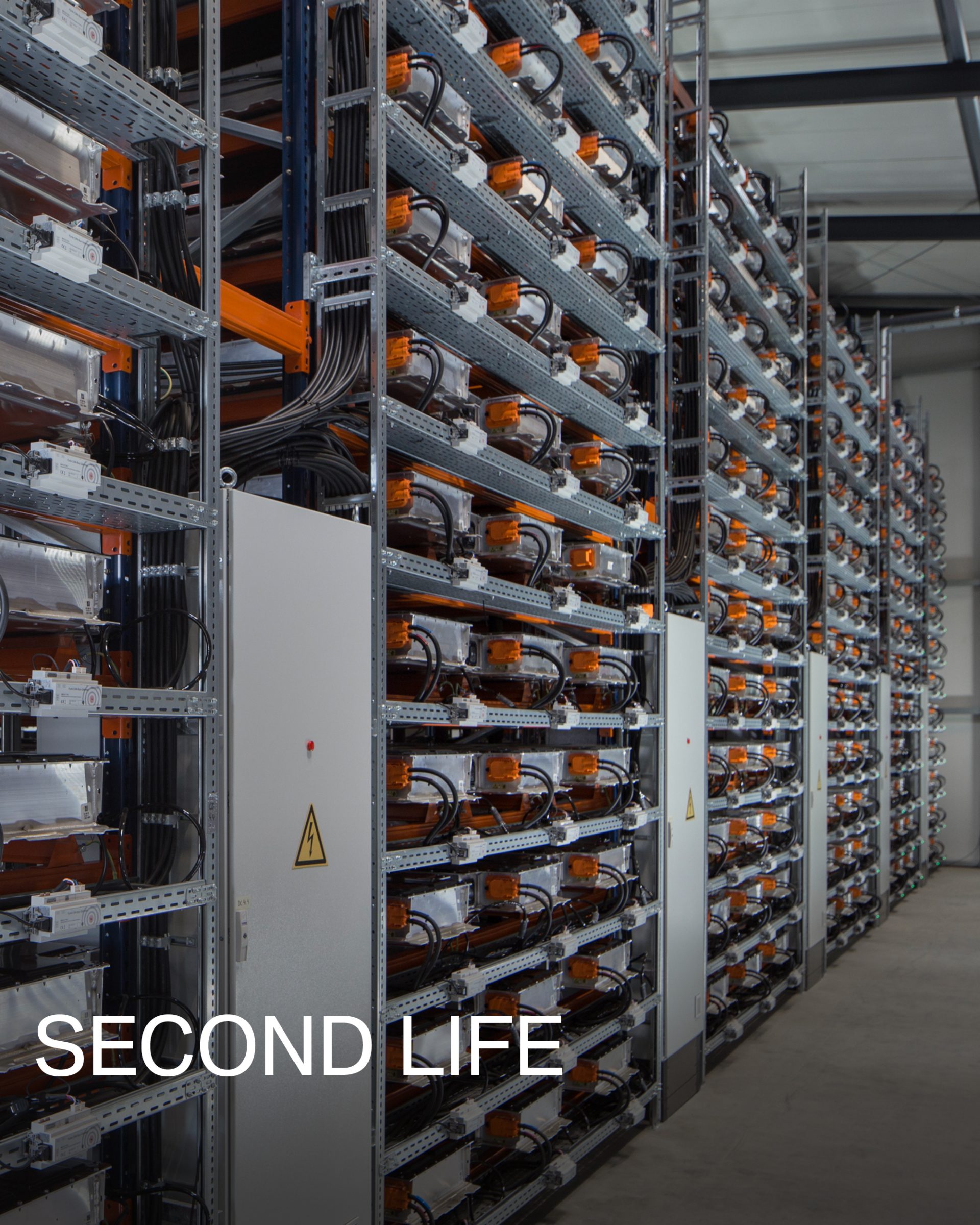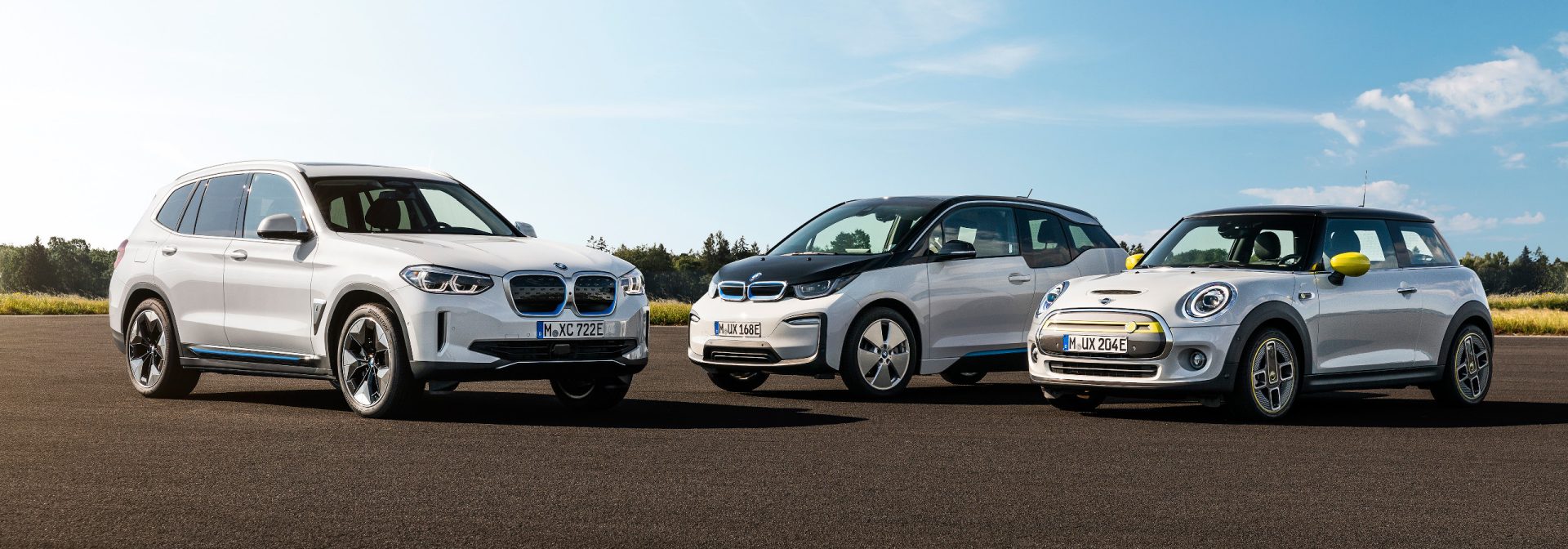SUSTAINABLE SOLUTIONS FOR CO2 REDUCTIONS.
As part of the Paris Climate Agreement of 2015, the EU committed to reducing greenhouse gas emissions by at least 40 percent up to 2030 compared with 1990. Designed to avert the most serious consequences of climate change, the Agreement sets out to reduce global warming to well below 2 degrees. It was ratified by 185 of the 197 nations at the World Climate Conference and also won the voluntary commitment of the BMW Group, which has reduced CO2 emissions from its vehicle fleet in Europe over the years by roughly 40 percent between 1990 and 2019. Realising all three aspects of sustainability — business, environmental and social — remains a key driver within our company.
Pioneer in sustainability
The BMW Group has a long history of sustainability. Back in 1973 it became the first company in the automotive industry to employ an environment officer. In 1992, it began to participate in the UN climate conferences. And almost ten years later, in 2001, it committed to the ten goals of the UN Global Compact. The goals of the compact range from supporting and respecting international human rights and abolishing child labour, to promoting initiatives that instil a wider sense of responsibility for the environment and employment, and the development and proliferation of eco-friendly technologies. The BMW Group’s progress on fulfilling the various principles is regularly published in the Sustainable Value Reports.
The most visible manifestation of the company’s take on sustainability came in 2013. A revolutionary approach to sustainable mobility was revealed, with the new BMW i sub-brand, the BMW i3 and i8, and mobility services. The fully thought-through, 360-degree view on the issue extends from the supply chain across vehicle operations right through to recycling. So far, over 200,000 BMW i models have been sold, as well as 400,000 other electrified BMWs and MINIs.

A further milestone was set in late July of this year, when BMW AG Management Board Chairman Oliver Zipse announced that sustainability and the efficient use of resources are now central to the strategic focus of the BMW Group. “I firmly believe the fight against climate change and how we use resources will decide the future of our society – and of the BMW Group,” he said. The new focus will be firmly established in all divisions, from administration and purchasing to development, production and sales. “We are making sustainability central to our future strategic direction,” Zipse added.
The BMW Group’s strategy, then, is considerably more ambitious than the UN’s agreement to limit global warming to two degrees. A detailed ten-year plan has been developed to realise it, with interim goals for every year during the period up to 2030. “We will report on our progress annually and measure ourselves against these targets. The compensation of our Board of Management and executive management will also be tied to this,” Zipse explained. Whether or not the annual goals are achieved will be made public in integrated reports. Starting in 2021, these will present annual progress updates on sustainability goals alongside financial figures and information on general business development — all in a single document. This will open up the BMW Group’s sustainability activities to even closer scrutiny from external and independent auditors.
Reduction of about 20 percent in fleet CO2 emissions
A key focal point of the sustainability strategy is the reduction of CO2 emissions. Despite the current challenges of the coronavirus pandemic, the BMW Group still has every intention of keeping to its fleet CO2 emissions target for 2021. The course was set years ago, it is now set to deliver on its ambitious fleet CO2 emissions goals for Europe this year and next, and will already achieve a major reduction in CO2 emissions in the EU of around 20 percent in 2020 compared with 2019.
Cooperations with leading battery cell and tech companies
As the share of electrified vehicles increases, far more attention will need to be paid to CO2 reductions in value creation, and to the energy-intensive production of high-voltage batteries especially. Without the countermeasures that are already in place, CO2 emissions in the supply chain per vehicle manufactured would even rise by more than a third up to 2030. But the BMW Group has entered into cooperations on the development and production of battery cells to prevent an increase of this kind as the planned 7 million electrified vehicles reach the market until that date.
A pioneer in sustainability, the BMW Group has contractually agreed with its cell manufacturers — CATL, Samsung SDI and Northvolt — that only green energy will be used to produce fifth-generation battery cells from the autumn of 2020. “As volumes increase, green energy will save around 10 million tonnes of CO2 within the next ten years. That’s roughly equivalent to the annual emissions of a city like Munich, with a population of about 1.5 million.”, Oliver Zipse explained. So as the share of electrified vehicles increases, the BMW Group will ensure CO2 emissions do not merely shift further upstream and happen in production rather than out on the road; instead they will actually fall. The technology that will make this possible is being advanced at the BMW Group’s Battery Cell Competence Centre in Munich, where engineers are also drilling down through the production process. The production of cell prototypes at the facility will allow the company to maintain complete control over this aspect of value creation and advance cell production.

The industrial development of innovative, sustainable battery cell technology is the subject of a joint technology consortium, in which the BMW Group is cooperating with the Swedish battery manufacturer Northvolt and the Belgian developer of battery cell materials Umicore. Together, the consortium partners are working on developing a completely sustainable value chain for battery cells in Europe, covering every aspect from development and production to recycling.
From 2024, Northvolt will produce battery cells for the BMW Group at its gigafactory. Currently under construction in Skellefteå, northern Sweden, the facility’s production lines will be powered entirely by wind energy and hydro-electricity generated in the region. Meanwhile, as Umicore contributes to the development of a sustainable battery cell in Europe, a recyclable design will play a key part. Recycling end-of-life battery components will be crucial in enabling the fullest possible reuse of raw materials, and in completing the material cycle as demand for battery cells soars.
Recycling companies face the challenge that, because not all car batteries can be opened in order to access their valuable components, carmakers and recycling companies have started developing their own recycling plans to support the long-term economic potential of a closed-loop economy. In collaboration with the recycling specialist Duesenfeld, the BMW Group has a small developed process that delivers a 96 percent recycling quota — graphite and electrolyte included In addition, the BMW Group already takes back all used battery packs from its vehicles worldwide.
Second-life concepts for batteries
When a vehicle reaches the end of its life cycle, the lithium-ion battery inside it is still not ripe for the scrap heap. In fact, battery packs can still be used for quite some time. Extracted from the vehicle, they can be utilised for stationary energy storage, for example, with another 10 to 12 years of service, according to lab tests by the German automobile club ADAC — as second-life batteries with a new working role.
In vehicle production, the battery cell of an electric car accounts for more energy consumption than any other component — even if the energy used is from renewable sources. So the continued use of batteries for stationary energy storage will improve their overall footprint. This approach also shows the opportunities available for linking the mobility and energy sectors and speeding up their transformation: since launching electromobility, the BMW Group has been pursuing a second-life approach that extends beyond the vehicle itself and presents various solutions. It sees itself primarily as a developer of procedures and an initiator of projects to show how battery packs can be used. The assumption is that, over the longer term, an entire external market for used battery packs will emerge.
As the energy transition proceeds, the topic of interim storage continues to gain importance. The BMW Group believes there will be significant demand for short-term energy storage and to offset peaks in energy grids. In addition, preparations are under way to use electric cars themselves as interim energy storage — for what is known as “bidirectional charging”.


One example of second-life battery use is the battery farm at BMW Group Plant Leipzig, where production is powered by wind and solar energy generated on-site. However, renewable energies are not always available when needed, so interim storage is required to maintain steady supplies. In Leipzig, this is provided by old battery packs from former BMW i3 test vehicles. The battery packs are connected to the grid to help stabilise it. By storing excess electricity and relaying it into the grid when needed, the packs act as buffers. They are turned into large energy storage units by being combined with each other. A further example can be found in Hamburg, where a 2 megawatt storage facility created from BMW i3 battery packs offsets peaks in port grids. But large storage systems are not the only solution for second-life batteries: they could also be used for private households, as capacity of just 20 kWh would be more than enough of a buffer to power a family home.




